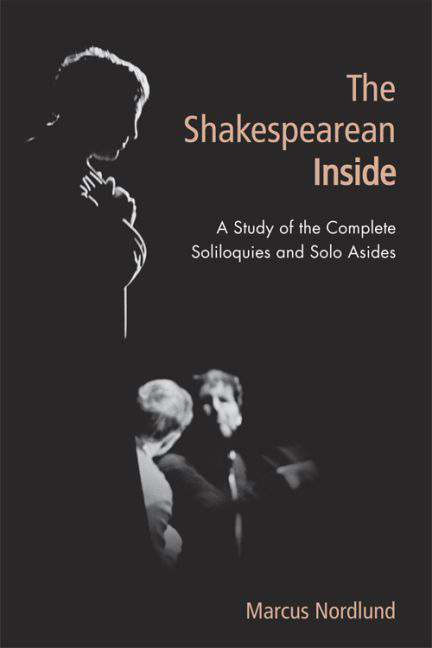Introduction
Published online by Cambridge University Press: 08 August 2017
Summary
What if we could produce new data of real literary interest about Shakespeare's complete plays? What if such data could uncover overriding patterns, and interesting exceptions from these patterns, that are not easily perceived by a single reader, or even by their author when he was still among the living? And what if we could combine these findings with traditional forms of scholarship that attend to finer nuances and place the works in a larger context? This could throw new light on Shakespeare's authorial habits and help us perceive the special nature of individual plays, characters, and scenes.
This book is the outcome of a project which applies a combination of computer-assisted quantitative analysis and traditional literary scholarship to all soliloquies and solo asides (excluding choruses and epilogues) in Shakespeare's complete plays. These two types of speech are brought together under the rubric ‘inside’ because their most important characteristic is shared: the speech forms part of the action but is not intended to be heard by any other character on the stage. Among other things, this communication of inside information to the audience makes these speeches central to the construction of fictional minds and individual point of view.
Over the years, many excellent books and articles have been devoted to Shakespeare's soliloquies and his construction of literary interiority, privacy, or selfhood. The chief novelty of The Shakespearean Inside lies in the employment of computer-assisted analysis as a complement to traditional interpretive practices. This fusion of traditional literary scholarship and ‘meso-level analysis’ – the systematic scrutiny of a limited collection of texts – stems from the recognition that literary particulars can only be understood as such in relation to a larger totality. It is only when we can generalise defensibly about broader tendencies in Shakespeare's dramatic practice that we can convincingly establish the unusual or even singular nature of individual plays, scenes, characters, or speeches.
The ideal, therefore, has been a marriage between modern information technology and traditional literary scholarship where the computational component is understood as a technological prosthetic that extends the processing power of the scholarly brain.
- Type
- Chapter
- Information
- The Shakespearean InsideA Study of the Complete Soliloquies and Solo Asides, pp. 1 - 14Publisher: Edinburgh University PressPrint publication year: 2017



